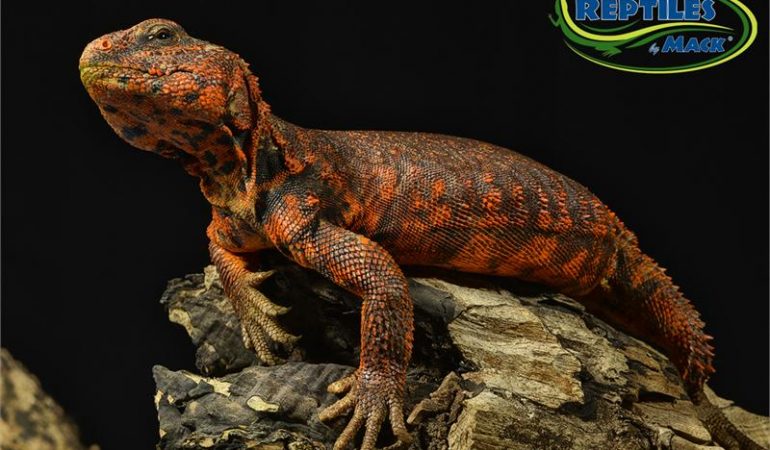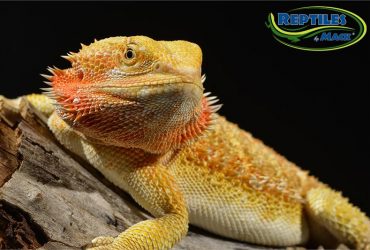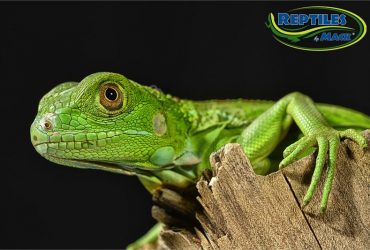Uromastyx Care Sheet
Scientific Name: Uromastyx species
Native to: Africa and the Middle East
Maximum Length: 6-12 inches
Life Span: Up to 10+ years with proper care
Characteristics:
Uromastyx have been in the pet trade for many years. As more and more have been imported, they are being kept successfully indoors by keepers across the country and bred in ever increasing numbers. Captive-hatched specimens make wonderful pets if their care needs are met properly. Uromastyx species are adapted to arid regions and are found from northwestern India throughout southwestern Asia and the Arabian Peninsula to the Sahara of Africa. They range in size from 10” in total length (U. ornata) to up to 24” in the larger species (U. aegypticus). Some species are sexually dimorphic (males and females are visually different). In Uromastyx ornatus for example, adult males are green or blue-green with yellows and oranges and females are more drab with yellows, tans, orange, and browns.
Care Tips:
Captive Care: Enclosures for Uromastyx can include glass terrariums, commercial plastic cages, and outdoor pens. They should be given an area with a hot basking area and the other end of the enclosure should be kept cooler so the lizard can escape the intense heat and UVB if it needs to. Juveniles can be kept in 20-gallon long terrariums and larger individuals will require tanks in the 40 to 75-gallon range, depending on the species and size of the individual.
Substrate: should be sterilized play sand or a mixture of ¼ peat moss and ¾ play sand. The key is for this substrate to remain dry. Damp substrate and even humidity inside the enclosure can cause the lizard to develop tail rot and other humidity-related health issues. A keeper should add a couple of shelters such as pieces of rain gutter or curled cork bark to provide the lizard an area to feel secure. Imitation rock caves work very well and add to the natural look of an enclosure. This shelter should be located at the end of the enclosure away from the intense heat. A shallow food dish (will contain the dry seed and bean mix) and a shallow water dish will complete the Uromastyx setup.
Heat and Lighting: As desert-dwelling lizards, Uromastyx are adapted to hot, dry conditions. Their enclosure should include a basking area that reaches a daytime high in the 100º to 120ºF range. They must, however be able to get out of this heat. A long enclosure can easily provide this ability for the lizard to thermoregulate (choose the temperature it needs). Bulbs should be chosen that emit UVB rays in addition to heat. UVB rays are important for all diurnal (active during the day) lizards being kept indoors. Uromastyx benefit greatly from not only heat but the absorption of these rays. Night temperatures should be less than the daytime temperatures. We recommend night temperatures in the 60s to 70s F.
Water: Most Uromastyx species obtain moisture from the food they eat. We recommend providing a shallow water dish about the size of a petri dish or mayonnaise jar lid for all species of Uromastyx. This water should be purified or dechlorinated. Small Uromastyx will often drink from rocks and wood in their enclosures when they are sprayed with water. We suggest only doing this once or twice a month to avoid raising the humidity of the enclosure.
Feeding: Uromastyx are herbivorous. Some care sheets suggest that young Uromastyx should be fed insects such as crickets, wax worms, and mealworms. Uromastyx fed on these insects show amazing growth but there is growing evidence that this high-protein diet may prove detrimental (and even fatal) for Uromastyx. We feed all sizes and all species of Uromastyx a salad made of a mixture of romaine lettuce, greenleaf lettuce, shredded sweet potatoes, carrots, peas, corn, and green peas. We also keep a shallow dish of white millet and a dry mix of split peas, lentils, and a variety of crushed beans in the enclosure at all times. In addition, dandelion greens, alfalfa, grass, and flowers can be added their diet when these plants are available. We sprinkle a mixture of 1/3 calcium and 2/3 high-quality reptile vitamins on the salad every third or fourth salad. Nutrition-related problems can occur if the lizards are not offered a healthy and varied diet with the proper supplementation. Growth can be stunted and Metabolic Bone Disease can develop in these lizards, causing them to be disfigured or killing them.
To download or print this care sheet – Click link: Uromastyx Care Sheet
[metaslider id=3584]




